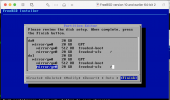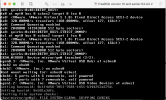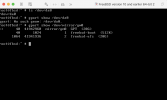They suggest building a pool of multiple raidz vdevs? I think the problem with this approach is that if I lose one raidz, I lose the whole pool.
I did not read the link, but I think it depends on what type of pool. If a stripe, then I think losing one raidz would affect the whole thing, but what does it take to lose a complete raidz vdev? That's multiple hardware failures on the single vdev.
I think one can take things to the extreme:
Could you take a bunch of disks, create mirror pairs, then create a raidz out of those mirror pairs while at the same time using another bunch of disks, create mirror pairs, create the same raidz and then mirror the two raidz?
I don't know, it hurts my head to think about it and I'm not sure what it would give you.
In the end I think a lot of what is "best" is defined by the workload. Generically, "more vdevs give better IOPs", different vdevs bias towards read perf, write perf, space, redundancy (how many you can lose before it doesn't work). I think searching around you can find some good links talking about that. Basically "If I have 8 disks to arrange in a zpool what configuration will give me the best read performance with good redundancy".
I don't know the answer to that but I'm sure it's out there (in at least 12 different configurations).
How are you going to make an additional 512 bytes magically appear at the end of a physical disk?
Jose, I did not mean to imply that Lucas was more authoratative than the Handbook but in practice he's actually doing a lot of the examples in his books so he may be more accurate than the Handbook. Enough said, I'm not debating that any more.
The quote above,
robot468 is referring specifically to a disk image file so its trivial to append. But: the spirit of it is "take two devices, create a gmirror with them, then use gpart to create partitions on the mirror device"
The stacking there has the gpart commands not acting on the physical devices, but rather on the GEOM mirror. The GEOM mirror modifies what the gpart command sees as the last sector, or at least it should be modifying it.




